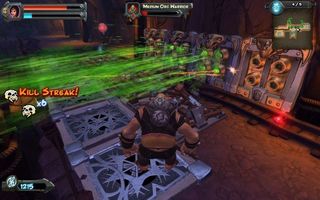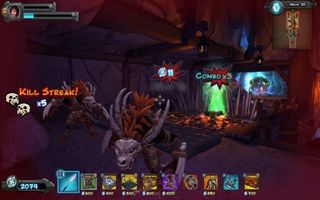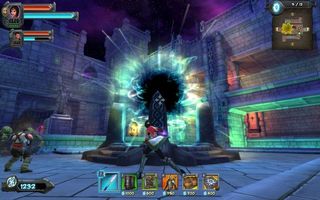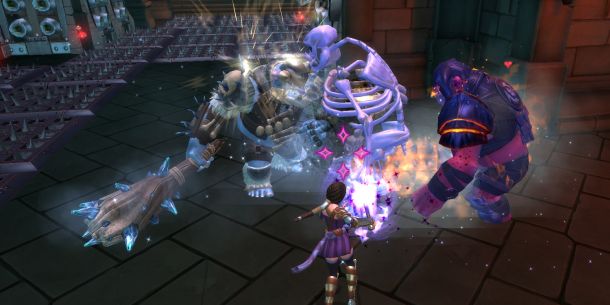Our Verdict
Addictive and satisfying however you play, despite some difficulty spikes in single player.
PC Gamer's got your back
Orcs must be shot, burnt, stabbed, crushed, impaled, frozen, catapaulted, dissolved in acid, turned into chickens, or forced to murder each other. They must die, and specifically they must die between leaving a large set of double doors and reaching a magical portal. You can cause this through a combination of placing traps and shooting them yourself. In fact, you must.
Orcs Must Die 2 is a cross between a tower defense game and a third person shooter, and like its predecessor, it is excellent. This is not a coincidence: it's a bunch of new enemies, traps, weapons and game modes for the same underlying game. The major change is what felt like Orcs Must Die's most obvious omission: 2-player co-op.
The challenge and the pleasure of the original was in constructing a perfect killzone: the exact combination of traps and barriers that inflict the maximum possible dying on the maximum possible orcs. In co-op, inevitably, that's tough: funds are split between the two of you, and you're usually going to have different ideas about how they should be spent. But the map design almost always gives you more than one stream of orcs to intercept, so you tackle half of them each.

My side of the map is lined with Acid Sprayers and guarded by Paladins, who keep the hordes busy while they get their flesh hosed off. My partner Matt's side hangs heavy with swinging maces, and the floor is a sea of debilitating gloop. Inevitably one of us gets overwhelmed, and the other falls back to help finish off the orcs that slip through.
That's great fun. But it's also the cause of the game's biggest problem: co-op isn't a separate campaign, and most of the later maps feel like they were designed for two players. Some have six entry points and two portals to protect, and orcs can come from a new route with only a few seconds' notice. Alone, it's a mad stress to try to divide your attention and resources between all of these, and some levels seem impossible to do well without help.

It exacerbates one of the first game's problems: too little information about what's coming. You're forewarned about enemy types, but not proportions or distribution, which leads to a painful amount of trial and error. I played one map perfectly for 40 minutes, then failed it outright when the final wave included a huge number of fire-proof enemies. A few of my traps were fire-based, and that dooms you on this particular map. Start again.
It's less frustrating once you've unlocked enough equipment to have the luxury of restrategising. All of the traps, weapons, perks and upgrades are now unlocked with a single unified system: earn skulls for good performance, spend skulls to unlock or improve things. It's much more compelling than the weird mix the first game used, and being able to earn better kit by grinding the new Endless mode or re-doing previous maps mitigates the balance problems.

The array of kit on offer is massive, the range of upgrades for each is exciting, and you'll be unlocking great new stuff long after you finish the campaign. My new favourite is the Polymorph weapon: it can permanently transform any enemy into something random. Sometimes that's an even tougher enemy, other times it's a chicken. So keep doing it until it's a chicken.
I'm itching to play again once I finish this. If you have someone to team up with, get it without hesitation. If you don't, hesitate slightly, then notice it's only £12/$15 and get it anyway.
Addictive and satisfying however you play, despite some difficulty spikes in single player.

Riot has been slowly chipping away at build creativity in League of Legends, all in the name of balance, but there are better solutions

Deus Ex director Warren Spector thinks that 'if someone made Deus Ex today it might be perceived as a documentary,' so if he made a new one it would be pretty different

Today's Wordle answer for Sunday, November 10
